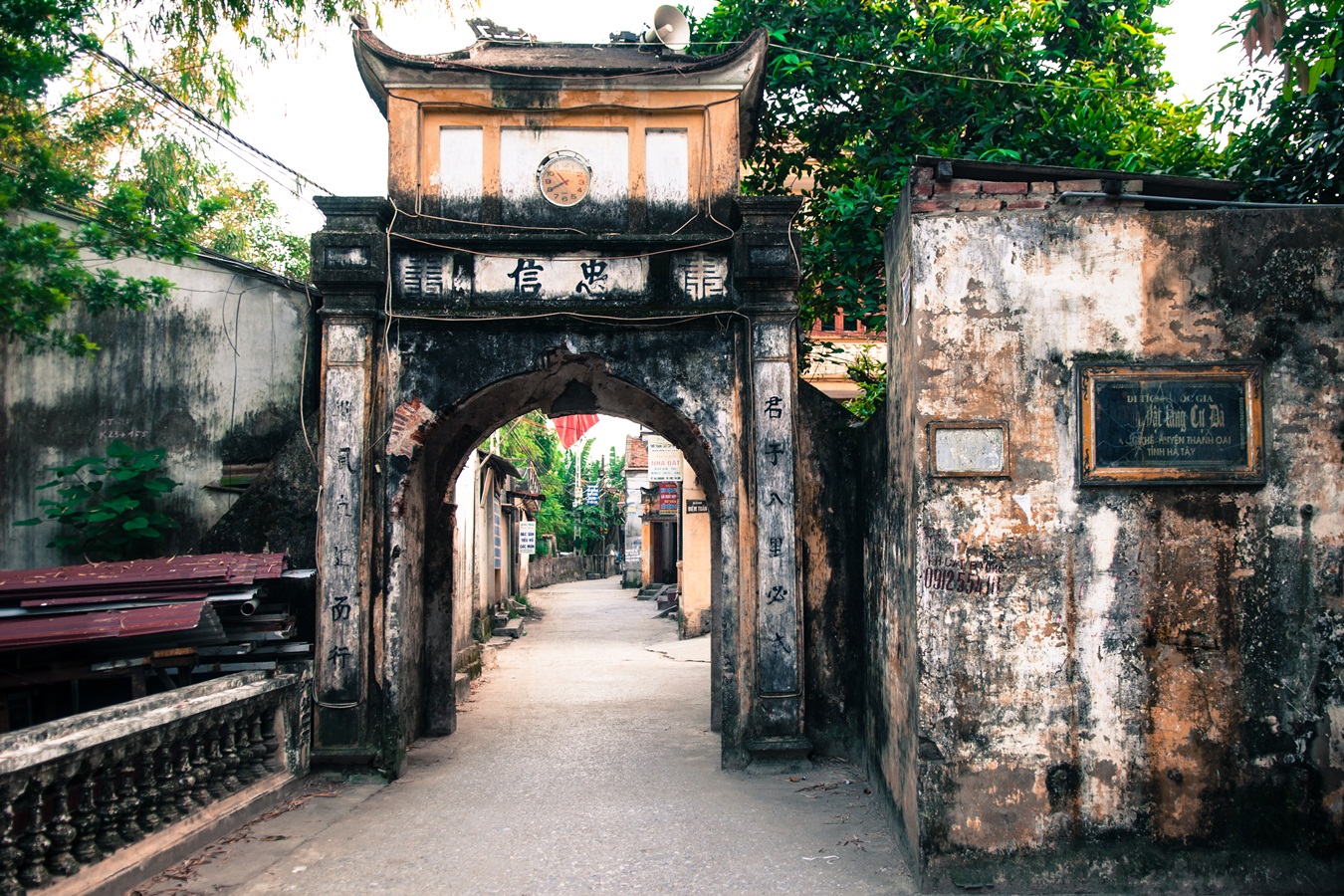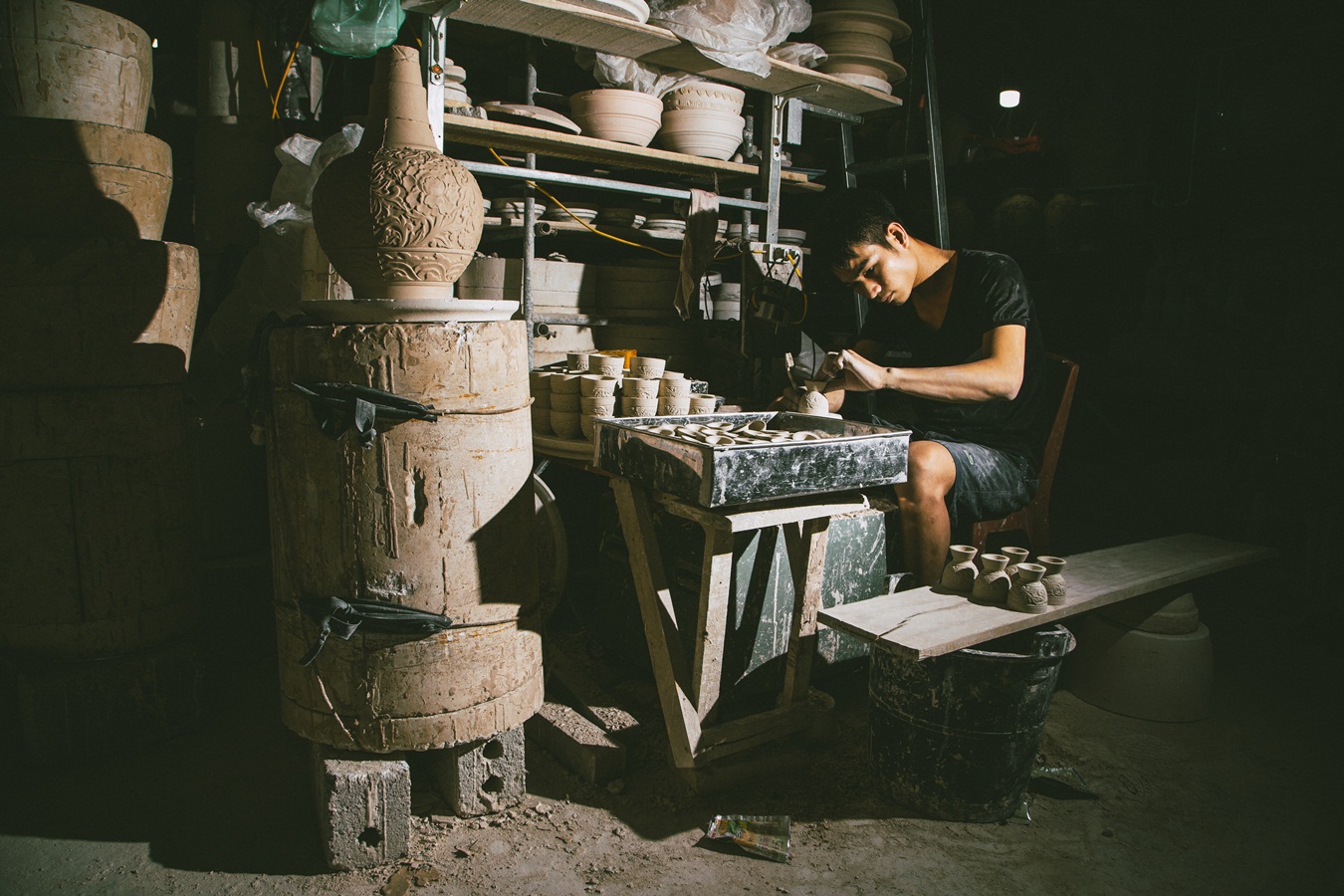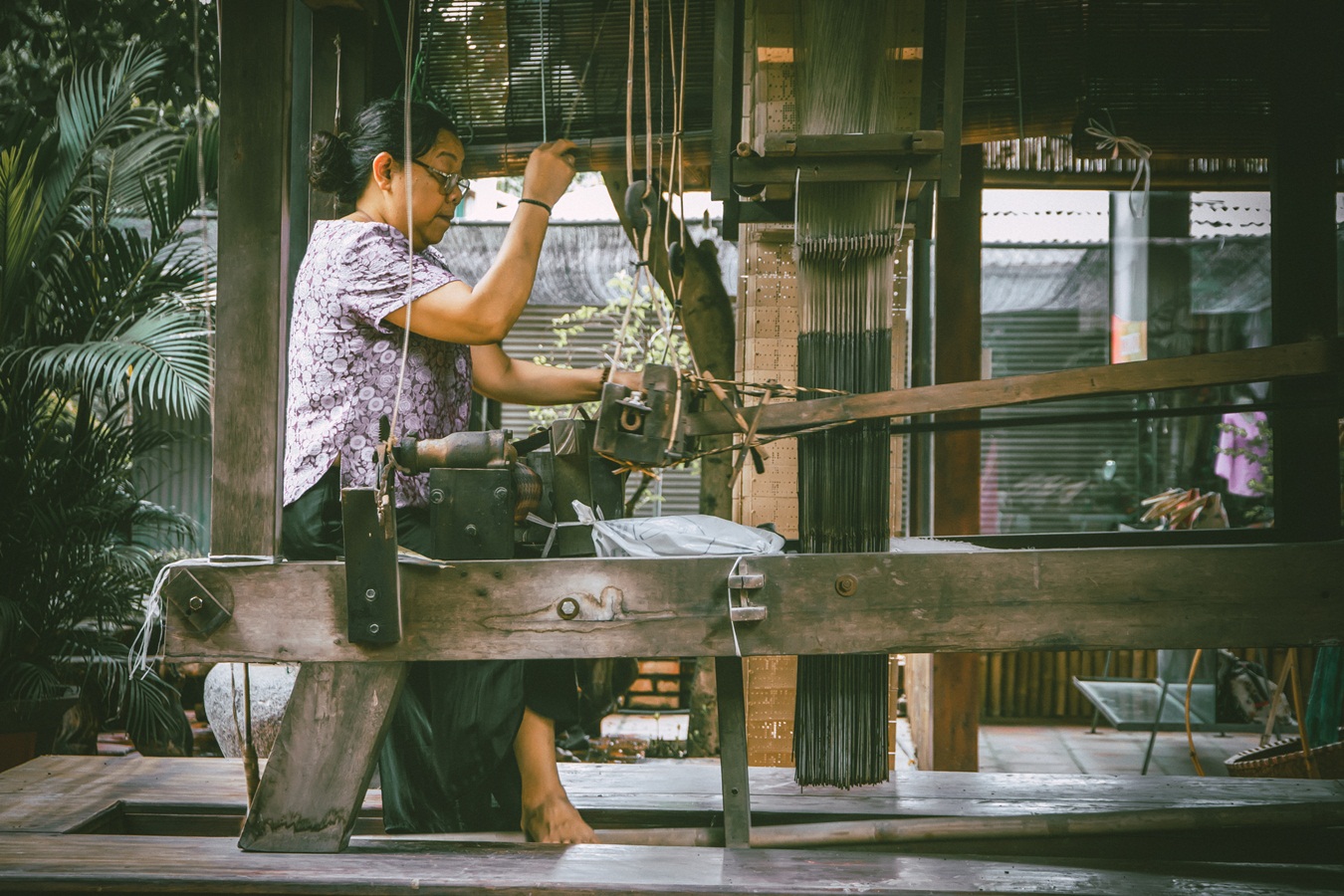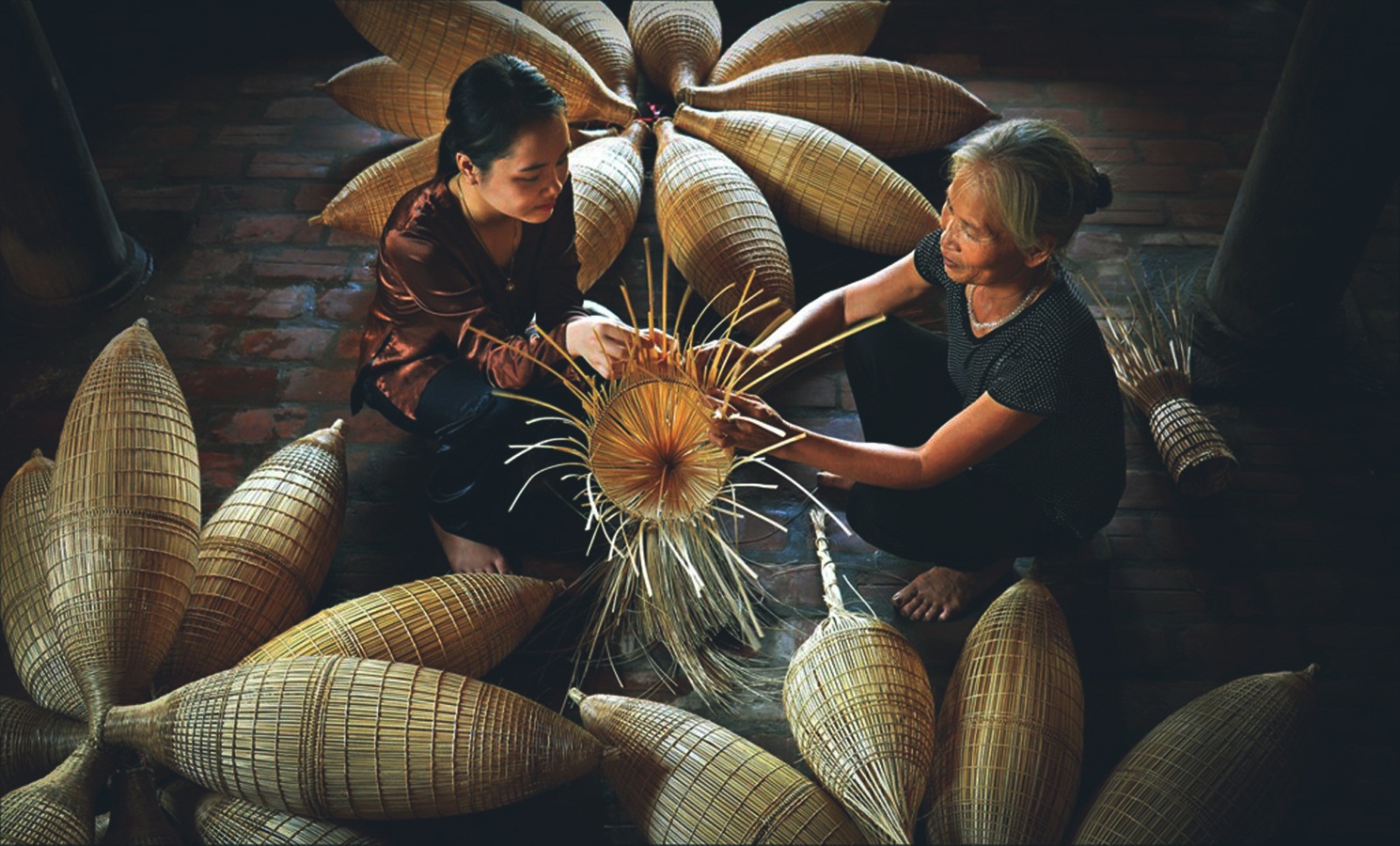Cost: 150 USD
Duration: 01 day
Hanoi, the millennial capital of fine cultural traditions, is the centre of culture and politics of Vietnam with many natural attractions as well as historic sites. Coming to Hanoi, you have the opportunities to visit the ancient Turtle Tower, the Old Quarter of 36 streets whose names give each and every Hanoian a great sense of pride, etc. Even though modestly called an “area of one hundred handicraft villages”, Hanoi, the city with more than a thousand years of history, is where up to 1350 craft villages have been pre served, which cannot be found in any other place in the world.
Located not too far from the city center, Hanoi’s craft villages lie next to the bamboo groves or rivers, which are also their sources of material and transportation. Such villages are must-visit places as each of them has its own cultural features, shown through the village’s gate, the tradition of worshipping the man who first taught the villagers to do these handicraft works or sophisticatedly created products. Only about 30 kilometers from the Old Quarter, there are a large number of famous handicraft villages, which are adjacent to each other, or are separated just by a paddy field or a river, such as Bat Trang pottery village, Quat Dong embroidery village, Trach Xa sewing village, Duyen Thai lacquer village, Chuyen My mosaic village, Nhan Hien sculpture village, Nhi Khe wood-carving village, Vac paper fan-making village, Chuong conical hat village, Phu Vinh bamboo-weaving village (whose spun bamboo ware products are praised as the peak of Vietnamese weaving art), etc. Though it is not able to mention all of Hanoi’s handicraft villages as well as interesting surprises in craft village tours, Bat Trang pottery village, Van Phuc silk village and Phu Vinh bamboo-weaving village are the most popular names of such tours in Hanoi.
Bat Trang pottery village
With a history of more than 6000 years, Bat Trang is one of the most important sources of pride of Hanoi’s craft villages. Peacefully located near the Red River with more than 2000 kilns, Bat Trang produces pottery that has long been circulated all over the country and even overseas. Products like big decorating porcelain vases or jugs painted with illustrations of tales have been purchased in mass quantity by Portuguese, Japanese, Polish and French, etc businessmen. Here, visitors can stroll along paths in the village, observe operating kilns and meet skilful potters who not only are able to master the clay and fire to create beautiful masterpieces but also keep within themselves an immense love for the traditional pottery making craft. small alleys with eye catching unique walls covered with black coal,... to admire porcelain vases in row upon row by the side of the road and to shop at your pleasure in stalls full of delicate pottery craft works, not only elegant traditional blue-flower ceramics but also many other pieces that you have encountered here and there all around the world. Besides everything mentioned above, you get to learn how to craft pottery pieces and then do it by yourself, which is no doubt a very interesting experience when visiting Bat Trang.
Van Phuc silk village
Situated on the bank of the Nhue River, Van Phuc silk village still retains a country area’s features of old such as the village’s well with lotus flowers near the ancient banyan tree, afternoon markets in front of the temple. Van Phuc has been famous for the traditional craft of silk weaving for a long time and with the history of 1000 years of craft, this village has been recognized as “the oldest silk weaving craft village to remain active today”.
Van Phuc silk village’s products embrace a wide range of colours and categories (brocade, silk, chiffon, satin, etc). In the past, Van Phuc silk was used to sew the national costumes. At Marseilla Fair in 1931, Van Phuc silk was present in the international market for the first time and was evaluated as a delicate product of Indochina by French people. Since 1990, Van Phuc silk has been exported to many countries such as France, Poland, Switzerland, Cambodia, etc.
Coming to Van Phuc silk village, in the joyful sound of shuttle moving back and forth, you will join a bustling crowd of many visitors going in and out, shopping and selecting products. The stalls used for displaying silk products stand by the side of the village’s road, selling stunning and colourful fabrics that are famous for being soft, light, and especially resistant and beautiful, which are features that make a name for this craft of silk weaving. Besides, when arriving at this old handicraft village, tourists have a chance to observe the process of silk weaving and directly witness artisans and weavers designing, drawing and embroidering. The tour to Van Phuc silk village will surely leave you with long-lasting and interesting impressions.
Phu Vinh bamboo-weaving village
Only a less-than-30-minute drive from Van Phuc village is another handicraft attraction of Hanoi, Phu Vinh bamboo-weaving village. This may be the only craft village in Vietnam where you can behold the woven craftworks that you can never imagine otherwise. Phu Vinh is truly a craft village of artisans, or more exactly, talented artists of the bamboo-weaving art. Artisans Nguyen Van Tinh, Nguyen Van Trung, etc are capable of weaving soulful portraits of leaders. There are also the more-than-60-years-old Nguyen Van Kha husband and wife who are the only ones in the world to be able to weave silk-light food cover tents by using the smallest possible rattan strips. Coming to Phu Vinh village, you also can melt into its peaceful atmosphere which is typical of the Northern countryside with bamboo and rattan groves, built-up area where young men and ladies, old men and women, and small children gather weaving from flower baskets to bags to storage baskets and so on. Phu Vinh is also the sole village in Vietnam that has delicate spun bamboo ware products which are praised as the peak of Vietnamese weaving art.
The experienced and skilful artisans in Phu Vinh are like the village’s “living museums”, the ones who keep and pass down to younger generations the love for bamboo weaving. When visiting this village, you can find and talk to artisans to listen to them passionately telling its history, and especially to experience first-hand their professional weaving skills. With a deep career passion, these artisans will definitely be the greatest most wholehearted guides to lead tourists into an impressive world of handicraft village.






